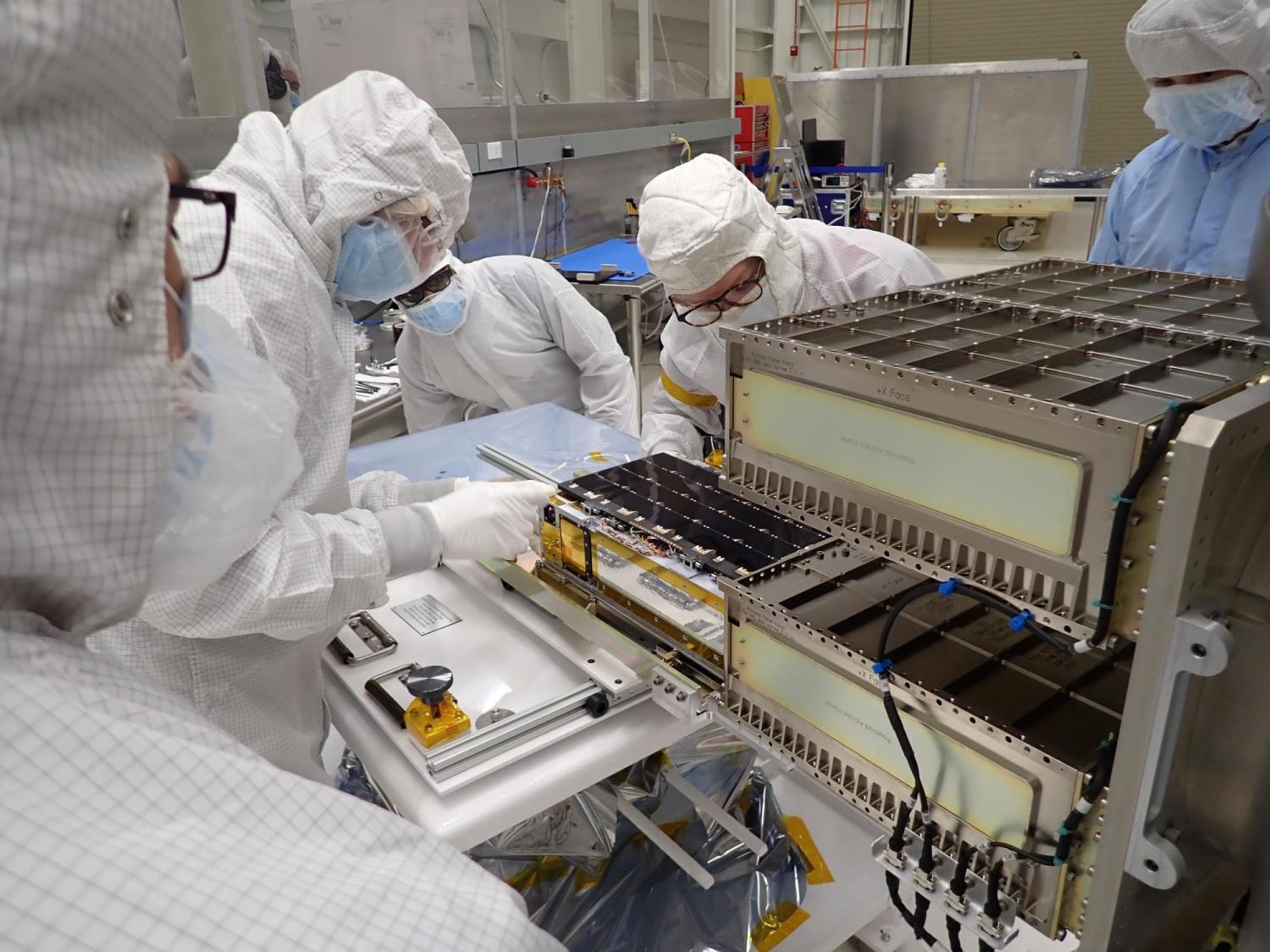New cereal box-sized satellite to explore alien planets
A new miniature satellite designed and built at CU Boulder’s Laboratory for Atmospheric and Space Physics (LASP) has mighty goals. It’s the first CubeSat mission funded by NASA to peer at one class of exoplanets, marking a major test of what these small spacecraft are capable of.
Since its launch in 2021, Colorado Ultraviolet Transit Experiment (CUTE) has been tracking the volatile physics around “hot Jupiters”—a class of large and extremely hot planets orbiting distant stars. CUTE is measuring how quickly gases are escaping from a minimum of 10 of these exoplanets using its unique, rectangular telescope design. The findings may tell scientists a lot about hot Jupiters and the full range of planets in the galaxy.
“The more places we understand atmospheric escape, the better we understand it as a whole,” said mission principal investigator Kevin France.

CU Boulder Astrophysics and Planetary Sciences graduate students and LASP engineer Nicholas DeCicco install CUTE into the LANDSAT-9 secondary payload dispenser at Vandenberg Space Force Base in July 2021. Photo: NASA/Parsons Corporation.
Principal investigator
Kevin France
Funding
National Aeronautics and Space Administration (NASA)
Collaboration + support
Laboratory for Atmospheric and Space Physics (LASP); NASA Astronomy; Space Research Institute of the American Academy of Science in Graz, Austria; Trinity College in Dublin, Ireland; the University of Toulouse, France; the University of Amsterdam in the Netherlands; the University of Arizona
Learn more about this topic:
New cereal box-sized satellite to explore alien planets

